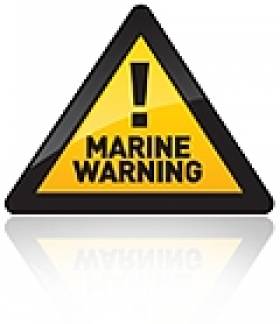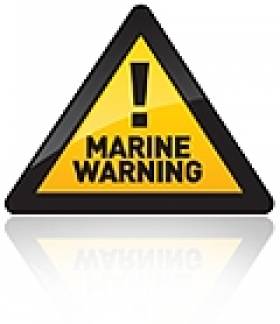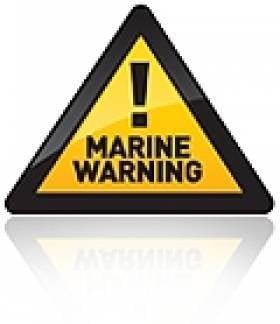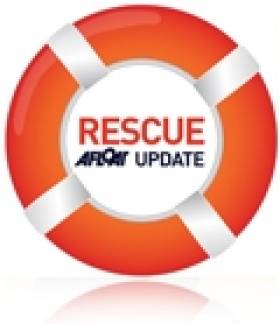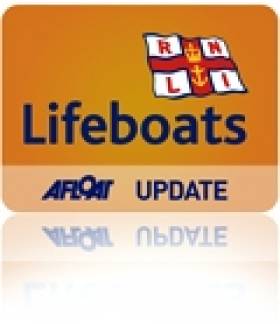Displaying items by tag: Marine Notice
Marine Notice: Standards of Materials, Fixtures and Fittings Acceptable on Class-Exempt Unlicensed Vessels
#MARINE NOTICE - The latest Marine Notice from the Department of Transport, Tourism and Sport (DTTAS) outlines the standards of materials, fixtures and fittings acceptable for use on class-exempt unlicensed vessels, defined as boats carrying passengers for the purpose of angling on smooth water voyages.
The notice is supplementary to the Licensing of Passenger Boats (Exemption) Regulations 2002 and the subsequent amendment of the same year, and it supersedes the particulars of Marine Notice No 1 of 2003.
The standards outlined within require that the hull, machinery and equipment of any vessel should be properly designed, fit for its intended purpose and in good condition so as to ensure to the safety of all on board.
Guidance is provided on what is to be considered adequate, suitable and approved in relation to the hull, machinery, items, fixtures and fittings on any vessel.
Generally, any item of equipment that bears the Marine Equipment Directive Mark of Conformity is considered complying with the 2002 regulations.
The notice also provides direction on pre-departure safety checks and briefings, and defines the appropriate areas of operation for the class exemption.
Complete details for all boat builders, boat repairers, owners and users are included in Marine Notice No 27 of 2012, a PDF of which is available to read and download HERE.
#MARINE NOTICE - The Department of Transport, Tourism and Sport (DTTAS) has issued a safety notice for all users of Electronic Chart Display and Information Systems (ECDIS).
Following an announcement by the International Maritime Organization (IMO) concerning potential display anomalies in some ECDIS systems, the International Hydrographic Organization (IHO) issued an 'ENC Data Presentation and Performance Check' in October 2011 to assist mariners and help determine the extent of the issues.
Reports from sea received by the IHO confirm that a number of manufacturers’ ECDIS fail to display some significant underwater features in the 'Standard' display mode.
As a result, these ECDIS must be operated in 'Full display' or 'All display' mode in order that all significant objects are visible to the mariner until a software upgrade is made available.
The notice also warns that earlier versions of the ECDIS manufactured by the Japan Radio Co (JRC) will not display some types of wreck and underwater obstructions (including stranded wrecks) in any display mode. These models of JRC ECDIS must be used in conjunction with paper charts, and affected mariners should contact JRC or their suppliers to arrange remedial action.
More details are included in Marine Notice No 23 of 2012, a PDF of which is available to read or download HERE.
#MARINE NOTICE - The latest Marine Notice from the Department of Transport, Tourism and Sport (DTTAS) details amendments to the European Communities (Vessel Traffic Monitoring and Information System) Regulations.
The change gives effect in Irish law to various amendments in an EU directive last year pertaining to the present EU vessel traffic monitoring and information system for the marine sector.
Of note in the new legislation is the inclusion of certain exemptions from the requirement for mariners to carry an AIS and/or (S-)VDR on board their vessels for tracking and data recording respectively, as well as the removal of the obligation to use SafeSearchIreland for mariners placing themselves at the disposal of the Irish Coast Guard.
Complete details of these exemptions and other amendments are included in Marine Notice No 22 of 2012, a PDF of which is available to read and download HERE.
Marine Notice: Well Inspections on Corrib Gas Field in May
#MARINE WARNING - Further to the notice earlier this week of a seismic survey over the Corrib Gas Field, the latest Marine Notice from the Department of Transport, Tourism and Sport (DTTAS) advises of well inspections in the area next month.
The survey vessel Well Enhancer (call sign 2ARS4) will be on location for approximately 30 days from next Thursday 3 May 2012. It will be listening on VHF Channel 16 throughout.
All mariners, including those engaged in fishing, are requested to give the vessel a wide berth of at least 500 metres and to keep a sharp lookout in the relevant areas. Mariners are also reminded of the 'safety zone' in place around the Corrib Gas Field as referred to in Marine Notice No 21 of 2006.
Complete details including co-ordinates of the work area are included in Marine Notice No 21 of 2012, a PDF of which is available to read and download HERE. Mariners are advised to check for amendments to this notice in the event of any significant changes to either location or duration.
#MARINE WARNING - Shell E&P Ireland Limited is scheduled to carry out a 3D seismic survey off the west coast of Ireland over the Corrib Gas Field.
The planned start date of the survey is 1 June 2012 and, weather permitting, the survey should be completed around the middle of September 2012.
The seismic acquisition will comprise a two-boat operation; the M/V Ocean Pearl (call sign: LAGD6) will lay the ocean bottom cables on the seafloor and will collect all data records, while the M/V Malene Ostervold (call sign: LCIU3) will serve as the source vessel. In addition to the seismic vessels, a third vessel will act as a guard vessel.
Seismic acquisition will occur over a set of six active 12km long solid ocean bottom cables laid 400m apart on the sea bed at a depth of 350m by the M/V Ocean Pearl. At the end of each cable is a 1km lead-in section which is attached to a standalone buoy at surface. These buoys contain a power pack as well as a recording system.
Each buoy contains a radio-link with the cable-laying vessel for remote control of the buoy and for data quality control. Each buoy has a GPS receiver, so its location is well known to both seismic vessels. One by one these cables are 'rolled along', ie picked up from the northern edge of the active spread, and redeployed at the southern edge.
The M/V Malene Ostervold will be towing two seismic sources, and operating around the set of six active 12km long cables.
Radio navigation warnings will be given out daily by the Irish Coast Guard, giving the co-ordinates of the centre point of the working area for that day. All vessels will be listening on VHF Channel 16 throughout the project.
All vessels, particularly those engaged in fishing, are requested to give the seismic vessels a wide berth and keep a sharp lookout in the relevant areas.
Complete details including co-ordinates of the work area are included in Marine Notice No 17 of 2012, a PDF of which is available to read and download HERE.
#MARINE WARNING - The latest Marine Notice from the Department of Transport, Tourism and Sport (DTTAS) advises on cable laying operations in the Irish Sea commencing today 22 April.
Following preliminary work on the East-West Interconnector power cable earlier this month, as previously reported on Afloat.ie, cable laying works will be undertaken by AMC Connector (call sign LAKY7) for a duration of approximately 18 days, subject to weather delays.
Operations will involve deployment of cable and ROVs which will restrict the vessel’s ability to manoeuvre.
The vessel will operate on a 24-hour basis, displaying appropriate day shapes and lights during operations, and will transmit an AIS signal. The vessel will be keeping a listening watch on VHF Channel 16 at all times during the operations.
All vessels, particularly those engaged in fishing, are requested to give the AMC Connector a wide berth.
Complete details including co-ordinates of the work area are included in Marine Notice No 20 of 2012, a PDF of which is available to read and download HERE.
Kawasaki Issues Recall for JT1500 Jetski
#JETSKI - Kawasaki has issued a recall for their Personal Watercraft Model JT1500 after the discovery of an assembly flaw that could lead to accidents on the water.
On eligible units of Jet Ski STX-15F, Ultra 260X/LX, Ultra LX and Ultra 300X/LX models, the guide pipe may have been detached from the outer steering cable during assembly. This can cause the steering to become obstructed, creating the potential for an accident.
All units within the ranges listed are eligible for repair, including unofficial imports. Full model and identification details of units for markets other than Europe are included in Marine Notice No 16 of 2012, which is available to read or download as a PDF HERE.
Second Cruiser in a Week Runs Aground in Lough Erne
#RESCUE - Four people were rescued on Lough Erne yesterday after their motor cruiser ran aground in the second such incident in a week, the Belfast Telegraph reports.
All on board were retrieved by RNLI lifeboat from the 29ft cruiser, which is believed to have stranded on rocks beyond the marked channel of the lough.
No injuries or damage to the vessel were reported, with a Northern Ireland Coastguard spokesperson describing it as "a routine rescue".
The coastguard blamed low water levels in the lough caused by lack of rainfall in Co Fermanagh.
Waterways Ireland has posted a marine notice warning boat users of the risks posed by "the extended period of unseasonal dry weather" for Ireland's inland waterways.
In a similar incident last Friday, three adults and two children were rescued from a cruiser that stranded in shallow water on the lough.
The Belfast Telegraph has more on the story HERE.
Marine Notice: East-West Interconnector Works in Irish Sea
#MARINE WARNING - The latest Marine Notice from the Department of Transport, Tourism and Sport (DTTAS) advises on preliminary work on the East-West interconnector power cable in the Irish Sea between Ireland and Wales over the next few weeks.
Briggs Marine commenced pre-lay grapnel runs along the line of the cable route on Sunday 1 April, and this work will be carried out over three weeks from the vessel Kingdom of Fife (call sign 2BKR2).
This work will continue on a 24-hour basis, and the vessel will display appropriate day shapes and lights as required, with a continuous watch on VHF Channel 16 and DSC.
Complete details including co-ordinates of the work area are included in Marine Notice No 14 of 2012, a PDF of which is available to read and download HERE.
#LIFEBOATS - The latest marine notice from the Department of Transport, Tourism and Sport (DTTAS) advises of construction work being carried out on Baltimore Lifeboat Station from today 5 March.
As previously reported on Afloat.ie, the works are part of a €2.6 million State-funded project to conduct essential remedial works at harbours across West Cork this year.
The works - which will be ongoing till mid-October pending weather conditions - will involve piling immediately adjacent to the foreshore on the north-east side of the building, and the deposition of rock to form an armoured breakwater jutting some 80m into Church Strand Bay.
No forseeable impact to mariners in the area is expected, but vessels are in any case requested to proceed slowly and with caution in the approach channel to Church Strand Bay and to give the works a wide berth to avoid wave-wash.
Further details for mariners are included in Marine Notice No 9 of 2012, a PDF of which is available to read and download HERE.



























